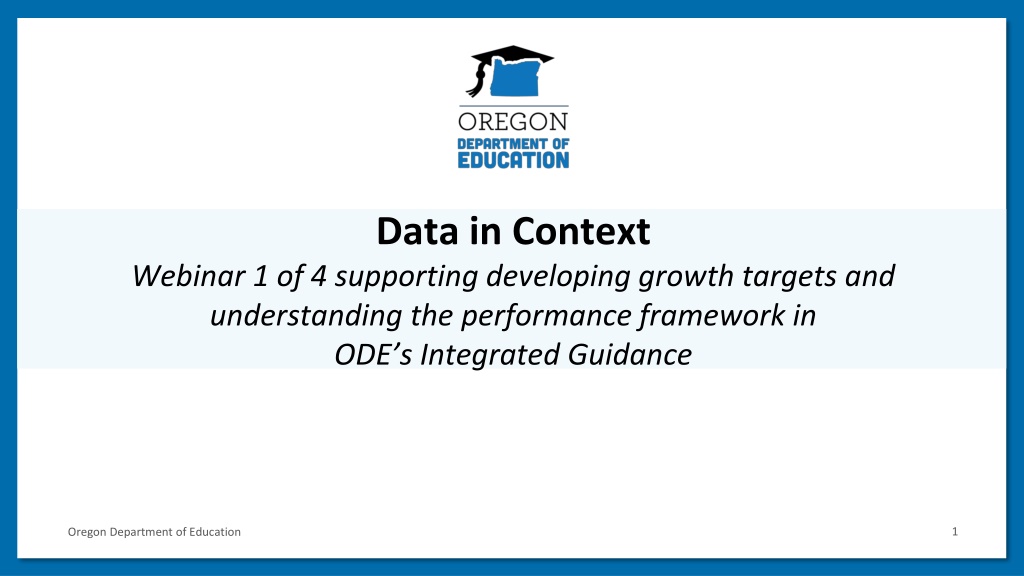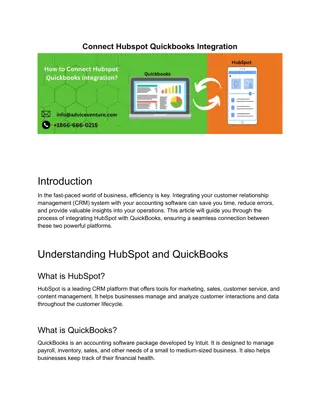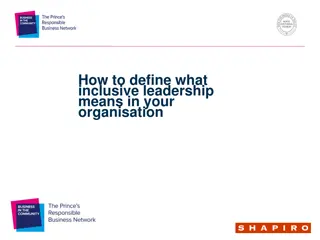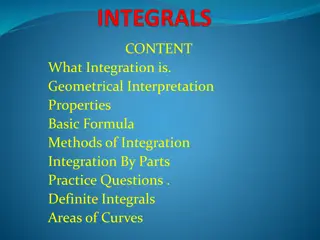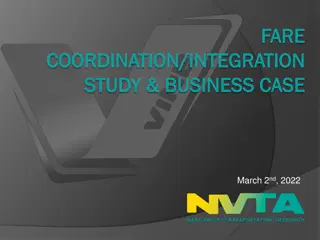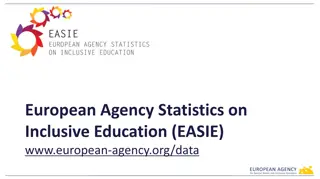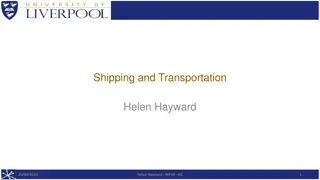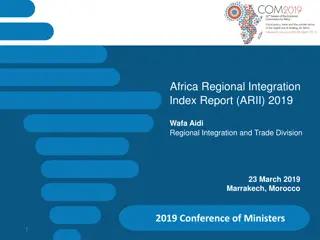Understanding Data Integration for Inclusive Target Setting
This webinar series by the Oregon Department of Education delves into the importance of integrating diverse data sources to set realistic and inclusive growth targets. Participants will learn about leveraging various data levels, establishing equitable practices, and avoiding accountability pitfalls. The sessions aim to guide educators in implementing effective goal-setting strategies.
Download Presentation

Please find below an Image/Link to download the presentation.
The content on the website is provided AS IS for your information and personal use only. It may not be sold, licensed, or shared on other websites without obtaining consent from the author. Download presentation by click this link. If you encounter any issues during the download, it is possible that the publisher has removed the file from their server.
E N D
Presentation Transcript
Data in Context Webinar 1 of 4 supporting developing growth targets and understanding the performance framework in ODE s Integrated Guidance 1 Oregon Department of Education
A four-part series Setting Targets by Making Sense of the Mosaic of Data How can realistic, ambitious, and attainable targets be developed with the data that is available? Data in Context How are connections between diverse data sources essential to setting inclusive targets? Local Optional Metrics How can existing or additional data be leveraged to broaden the narrative of particular successes and challenges within districts? Deep Dive Workshop: Setting Growth Targets How can collaboration support the complexities of establishing realistic targets? January 11, 2022 3:30-5:00 PM January 18, 2022 4:00-5:30 PM February 1, 2022 4:00-5:30 PM February 15, 2022 4:00-5:30 PM 2 Oregon Department of Education
Todays Objectives This session aims to guide participants to be able to: Identify levels of data & the role of integration Identify relationships between levels of data and types of Longitudinal Performance Growth Targets Implement equitable data practices to achieve realistic and inclusive goal setting How are connections between diverse data sources essential to setting inclusive targets? 3 Oregon Department of Education
How do we know what we know? Working together we can avoid accountability pitfalls experienced in No Child Left Behind, Race to the Top, education compacts, and other education initiatives over the last few decades LPGTs: There is no single formula for setting these targets, as investments in programs and interventions will vary from district to district. -Integrated Guidance, p 155 Previous accountability measures often served to narrow the curriculum, using shame and blame of schools as an overly simplistic tactic while offering over-promised or oversimplified outcomes. 4 Oregon Department of Education
Levels of Data Integrating Levels of Data means: Understanding the relationship amongst each of these levels to interpret data Capturing more of the regional context Applying context when setting targets Advancing towards inclusive & equitable practices Note the relationship between levels of data & where they most apply in setting targets 5 Oregon Department of Education
Exploring Data Levels 3 Essential Understandings for Discussing Data: Break-Out Rounds: 1. Student group performance differs as a function of their experience within the education system and not as a function of anything intrinsic to that group. 2. Use an asset-based approach (look for what s going right). 3. A singular story is not representative of a population. 1. Small groups will receive a different pieces of data each round. Each piece of data represents one of the levels of data. The group facilitator will share screen to review data together as a group. The group will discuss prompted by the discussion questions for each round. The facilitator will capture some brief notes. 2. 3. 6 Oregon Department of Education
Implementing Equity in Data Practices - Why? Leverages multiple perspectives and equity-centered data analysis to identify strengths and areas for improvement as well as to make timely adjustments to improve experiences and outcomes for students. Integrated Guidance pg. 15 Data should: 1. Make visible community-driven needs, challenges, and strengths 2. Represent the community 3. Be treated in ways that promote community self- determination 7 Oregon Department of Education
Implementing Equity in Data Practices - How? identities, experiences, expertise Evaluators Holistic Data Practices: Measure and define improved student outcomes through multiple approaches that holistically center student well- being rather than a singular focus on academics Sources types, representation, levels Methods collection, analysis, interpretation 8 Oregon Department of Education
Implementing Equity in Data Practices - How? Data should: 1. Make visible community- driven needs, challenges, and strengths Disaggregation 2. Represent the community 3. Be treated in ways that promote community self-determination 9 Oregon Department of Education
Types of Targets For the five common metrics, three types of targets need to be set: Baseline Stretch Gap-Closing Context can alter the trajectories of all 10 Oregon Department of Education
Holistic Target Setting: From Breakout Data Gap-Closing Targets Brainstorm : How can data integration allow you to be both ambitious and realistic in target setting? 11 Oregon Department of Education
Reflection How do equitable practices and a holistic data approach show up in the way you set targets? 12 Oregon Department of Education
Summary Today we focused on the following objectives: Identify levels of data & the role of integration Example in breakouts and reflecting on the unique contexts in YOUR community Identify relationships between levels of data and types of Longitudinal Performance Growth Targets How to use context to think about setting targets Implement equitable data practices to achieve realistic and inclusive goal setting How does this allow us to set ambitious and realistic targets that meet our objectives for the function of data. Context Matters. For all 3 targets, context can alter how closely you adhere to purely mathematical projections of the available data. 13 Oregon Department of Education
Resources & References Integrated Guidance Appendix E of the Integrated Guidance (Equity Lens Tools) Appendix I: Detailed Guidance on Longitudinal Performance Growth Targets (LPGTs)(IG pages 154-159) Navigating Data Sheets Video Street Data by Shane Safir and Jamila Dugan Street Data: A New Grammar for Educational Equity ODE s Equity Strategic Plan and the ODE Equity Lens Coalition of Communities of Color Oregon Department of Education For a large list of resources 14
Next Session & Beyond: Setting Targets by Making Sense of the Mosaic of Data How can realistic, ambitious, and attainable targets be developed with available data? Local Optional Metrics How can existing or additional data be leveraged to broaden the narrative of particular successes and challenges within districts? Contextualizing Data Deep Dive Workshop: Setting Growth Targets How can collaboration support the complexities of establishing realistic targets? Thank you for joining us! January 18, 2022 4:00-5:30 PM February 1, 2022 4:00-5:30 PM February 15, 2022 4:00-5:30 PM 15 Oregon Department of Education
